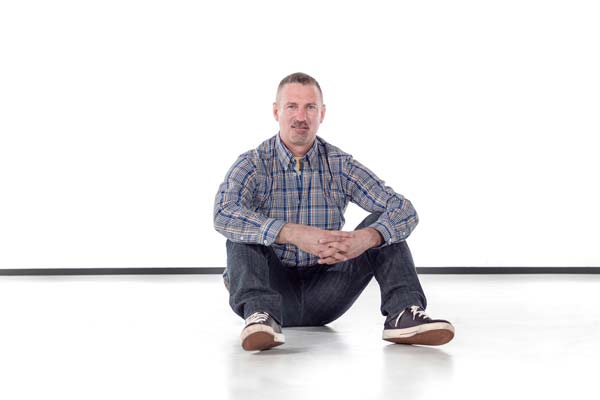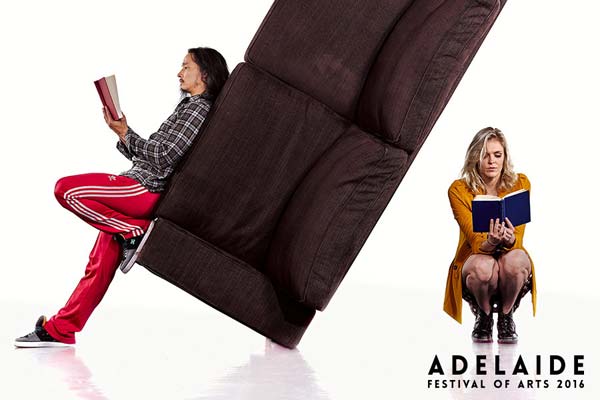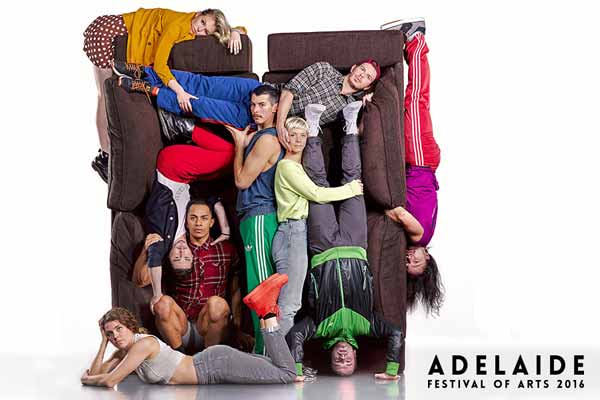'Habitus' is a fusion of dance, acrobatics, humour and various household paraphernalia in a production promising to be both deeply emotional and playful.
'Habitus' is choreographed and directed by the renowned Garry Stewart. As with his previous productions, the work contains deeper ideas, such as human identity, materialism, wastefulness, and nature. Uniquely however, the thematic exploration in 'Habitus' will be lighthearted and comical, with household items such as books, ironing boards and even sofas moving beyond props to become pseudo-dance partners.
 Recently, Garry was on the couch to give insight into his life, dance, and the upcoming production:
Recently, Garry was on the couch to give insight into his life, dance, and the upcoming production:On how he first got into dance...
I was actually studying social work at university when I saw the Sydney Dance Company in its early days. It completely blew me away and something really profound happened in that I completely identified and knew I had to do it. I dropped out of university studies and started full time dance at the age of – I had just turned 20.
On whether it was easy...
Oh no, no, no, no. I don't think I had realised what I had gotten myself into! It was extraordinarily painful for the first couple of years that’s for sure. I remember waking up with cramps every night all through my body for the first 18 months at least. I don’t think I realised how difficult dance is because good dancers make it look so easy. So I saw it and thought ‘oh yes, I can absolutely do that’ but I didn’t realise that part of getting to that place would be so incredibly gruelling.
 © Chris Herzfeld
© Chris HerzfeldOn transitioning to choreography...
I think I wanted to choreograph pretty soon after I started learning how to dance. I remember when I was a student at the Australian Ballet School I encouraged all of my other student colleagues to choreograph and we had a small choreographic season. Certainly that was in me from the very beginning.
I always spent hours visualising theatrical images and possible stagings. I was interested in body movement invention – and quite obsessed with it. Even though it’s incredibly clichéd, really doing choreography is one of those things that are a bit of a calling – the same as being a dancer – you don’t decide to do it, it grabs you by the scruff of the neck and you just have to do it. And certainly both dancing and choreography were that for me.
I’ve had people say to me 'why don’t you become a filmmaker at this point in your career?' And I say 'if I was a film director I would be directing films'. It’s not something you just think ‘oh that seems like a good idea’. Something internal needs to thrust you towards the thing that you are going to do rather than it being a cerebral decision.

On 'Habitus'...
In the work we’re dealing with a couple of things. One is the relationship between people and domestic objects – sofas and tables and chairs and books and various other paraphernalia. We’re toying with those relationships and upending them in a really playful way that makes the audience question what are these objects and what’s our relationship to them. It’s an interesting thought that one day all of it will be meaningless and that nature will consume all of it again. In nature there is no such thing as detritus or rubbish – it’s all reutilised and transformed. It’s only humans that make mountains of rubbish that just sit there.
The other thing the work looks at is how we have habits in our body. Our bodies operate through a whole complex of learnt habits and ways of moving. How we respond to things emotionally and psychologically and the impact that has on our body.
Having said that, there is a great deal of humour and ingenuity built into 'Habitus'. The work is really built for audiences. It certainly shifts emotionally quite a bit throughout. Even though the work is quite poetic and even delves into abstraction I’m more curious about igniting the sense of play and invention that the audience has.

On the formidable training regime of the cast of 'Habitus'...
In the Australian Dance Theatre (ADT), the dancers train in elements of classical ballet, contemporary dance, break dance, yoga, circus skills, fitness and circuit training, cross training and also tumbling and gymnastics. They’re really quite unique because of that training. It’s certainly not a pleasure cruise! But it’s also extremely rewarding for someone wanting a career in dance.
On the music for 'Habitus'...
A lot of the music I have chosen is quite bright. It’s not the adagios – it’s more the allegro and there is something really humorous and light about that music. To me that’s a really interesting departure because I’ve almost always worked with electronic music. In order to take the work in a different direction I thought I would change the musical palette. One of our dancers is also a classical harpist so he’s playing harp live on stage. And there is some obligatory electric music too, so it’s quite an eclectic score which reflects the eclecticism of the work itself!
{youtube}qK_uoC_ltA8{/youtube}
On his favourite household item to dance with...
I must say in this work I’ve been quite keen with the sofas. But also with books. Until this work I never quite realised how much you can do with books choreographically! I think the books have been a real treat in this work and have been a really really fun thing to explore as a choreographic object. I’ve been saying to the dancers that all of the objects they have been working with are dancers of a sort even though they’re inanimate. In many ways the domestic objects in the work are kind of like dancers. They’re certainly embedded centrally into the fabric of the choreography. That’s been a lot of fun for sure. It’s been an extremely enjoyable rehearsal period.
On why to see 'Habitus'...
Our audience is always very curious about a new ADT show because each one is so different. At the very least you’re going to have an experience of absolutely phenomenal first-rate dance and amazing performers. There has always been an interest in bodies that can do things that are extreme or extraordinary – certainly that's the calling card of circus.
With ADT, even though we’re working within the form of dance, with just a few touches of circus elements the dancers certainly have that allure of being very compelling to broad audiences because of their physical virtuosity and incredibly diverse range of physical capabilities. And in this particular work I think there is a great sense of humour, there is a great sense of invention.






